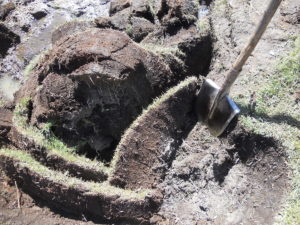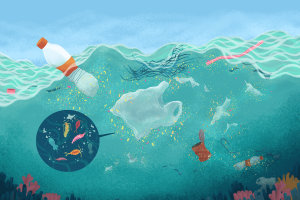On the last day of April 2022, the Kabul River was still flowing from Afghanistan to Pakistan, but only just. That day, the major tributary of the Indus supplied 16,700 cubic feet per second (cusec) of water to the Indus river system, compared with the 10-year average of 41,200 cusec for 30 April.
Despite the potentially detrimental impact on crops, authorities in Pakistan held back water in dams to generate electricity instead of releasing it into irrigation canals.
Editor’s note
This is the second in a two-part series on the Kabul River. Read the first article, on why attempts by Pakistan to reach an agreement with Afghanistan on the river have been thwarted, here.
Over the past two winters, lower-than-average snowfall in the upper reaches of the Kabul river basin has led to drought and reports of falling water levels (data on the Kabul River’s flow is not available).
About 20 million people in Afghanistan and Pakistan depend on the Kabul River for drinking water, irrigation, hydropower, livelihoods and recreational activities. Analysis of hydrological data has found that the mean discharge of water in the Kabul river basin fell by 4.6% between 1950 and 2018.

What could a Kabul River treaty achieve as water levels change?
An accord on the rivers shared between Pakistan and Afghanistan would secure both countries’ water rights, said Nasir Ghafoor, chief engineer for development at the Irrigation Department in the state government of Khyber Pakhtunkhwa. (Khyber Pakhtunkhwa is the province where the Kabul River enters Pakistan.)
Having an agreement in place would mean that as water levels increase or decrease in the future due to climate change, the current distribution of water will continue.
Ghafoor said: “It will not affect or reduce water flow to Pakistan or decrease Afghanistan’s share. Pakistan will get whatever it is getting currently, and Afghanistan would be able to get as per its capacity.”
For example, he said, of 100 million acre feet of water flowing in the river, “Pakistan is using 60% and Afghanistan 40%, so in case of a treaty both countries will get the same quantity of water.”
However, “if there is no accord, Afghanistan could store maximum water and could deal a heavy blow to Khareef and Rabi crops [crops sown during the winter and rainy seasons] in Pakistan that would be extremely damaging for Pakistan, which has an agrarian economy.”
Kabul River has become a sewer
The little water that was flowing in the Kabul River in late April was dirty. Wastewater from the capital of Afghanistan flows untreated into the Kabul River.
The situation is no better in downstream Pakistan. Industrial wastewater and domestic sewage from around 10 cities in Khyber Pakhtunkhwa flow into the river.
The province’s 2002 River Protection Ordinance says: “No person shall dispose, directly or indirectly, any solid waste or hazardous waste or other additional substances specified and notified by Government into rivers or their tributaries.”
Officials told The Third Pole that there are no working wastewater treatment plants in Khyber Pakhtunkhwa or its capital, Peshawar.

In 2018, the Pakistan Council of Research in Water Resources (PCRWR) assessed the quality of drinking water sources along the Kabul River, including household borewells, open wells, tube-wells and handpumps.
The PCRWR found most of the water sources along the Kabul River to be unsafe for drinking. The report states that the river’s water was similar to drain water quality, with chemical oxygen demand (COD) at 170 milligrams per litre and biological oxygen demand (BOD) at 98 mg/l. This is beyond permissible limits set in Pakistan’s National Environmental Quality Standards even for municipal and liquid effluents, which stipulate a COD of 150 mg/l and a BOD of 80 mg/l for inland waters. More recent official research on water quality is not available.
One way effluent pollutes healthy lakes and streams is by increasing the amount of organic matter in the water, which is then decomposed by bacteria and other microorganisms. This process requires a lot of oxygen, slowly choking the water body by reducing the natural presence of oxygen. Scientists measure this phenomenon using biological oxygen demand (BOD), or the amount of oxygen that bacteria need to dissolve the organic matter present in polluted waters.
Chemical oxygen demand (COD) measures the amount of oxygen required to chemically breakdown organic material and inorganic nutrients.
A senior officer at Khyber Pakhtunkhwa’s Local Governments Elections and Rural Development Department, requesting anonymity, told The Third Pole that an attempt during the late 1990s to set up plants failed due to mismanagement, poor planning, lack of funds and the high cost of maintaining a sewerage system.
In 2014 and 2019, masterplans were drafted proposing to restore existing plants and set up new ones. Jehangir Khan, an engineer and projects manager at Water and Sanitation Services, Peshawar, said that the high cost of land, treatment machinery and operation and maintenance expenses have obstructed the plants from materialising. Work is currently underway on one wastewater treatment plant.
Khan added that urbanisation has led to rain and wastewater drainage systems being connected throughout the province. “This system has made it further difficult for the government to establish such projects as it is very difficult to treat water especially in case of heavy rain,” he said.
Health impacts are not monitored
“Uncontrolled contamination has turned the river into a sewer that has serious health hazards,” said Farrah Zaidi, a zoologist at the University of Peshawar. As well as pollution contaminating the river’s ecology and food chain, she pointed out the increased risk faced by women, as they use the river to wash clothes and dishes, and drink water from unsafe sources next to the river.
She said she was not aware of any data on the impact of consuming the Kabul River’s water on human health. “The government should not drag its feet anymore to carry out a comprehensive survey or laboratory tests, collect data of people with hepatitis, kidney, liver, respiratory diseases especially those living on sides of the river and consuming this water,” she said, also calling for thorough surveys and research on the environmental hazards.
Zaigham Hassan, who researches fisheries and freshwater biology at the University of Peshawar, said the population of native fish is under severe stress due to pollution and is declining fast. “We hardly get a few rohu fish [a species of carp found in South Asia] for laboratory testing, while the size of sher mahi [an indigenous fish] is on the decrease. Meanwhile non-native fish like tilapia are on the rise.”
Hassan added that wastewater must be treated to improve the river’s water quality.
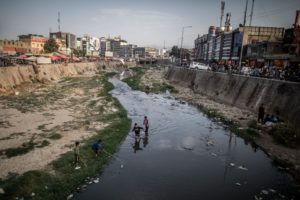

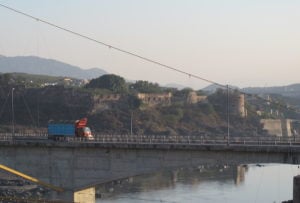

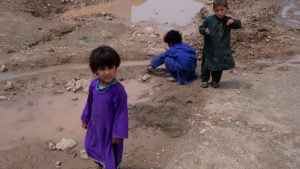
![A solitary woman, covered in traditional head scarf, walking towards the Indus River near Skardu in Northern Pakistan [image: Alamy]](https://dialogue.earth/content/uploads/2021/05/2BEJNY8-300x200.jpg)
